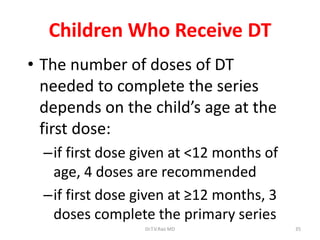Tetanus is caused by Clostridium tetani bacteria entering the body through a wound. The bacteria produces a toxin that blocks inhibitory neurotransmitters in the central nervous system, causing painful muscle spasms. Symptoms include lockjaw and muscle rigidity. It is diagnosed based on symptoms and confirmed by culture if the bacteria is present. Treatment involves antibiotics, tetanus immune globulin to neutralize toxin, wound debridement, and supportive care. Prevention through routine tetanus vaccination is highly effective at eliminating this disease.






































